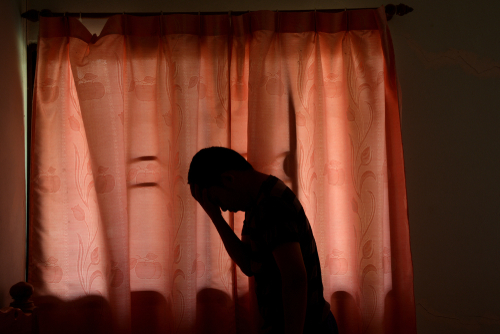Understanding Addiction's Effect on Crying

Parents of adolescents or teens who have been actively addicted to drugs and alcohol identify with three kinds of crying displayed by their children. First, is melodramatic, over the top, often manipulative crying which seems to have no end. Second is frantic, nervous crying. Third is no crying at all, fighting back tears, and suppressing emotions.
Crying is many things for our children. As a response to stress, crying can be an emotional release. Emotions are released through crying which helps children regulate their feelings. Children are learning to communicate their needs to themselves, their parents, and the people around them. Crying is a natural communication tool which lets people know that a child needs attention, needs tending to, and needs comforting.
The ability to cry comes from the limbic system, a part of the brain responsible for emotions and emotional regulation. During childhood, adolescence, and puberty into teenagehood, the brain is developing. Brain development is believed to continue until the early to mid twenties. Children, teens, and adolescents who abuse drugs and alcohol halt their psychological and emotional development, research has found. Stopping the development of the brain means stopping the development of brain functions, like the ones taking place in the limbic systems.
Children who abuse substances become completely disconnected from their natural ability to cry, stop crying, or regulate their crying. For teenagers and adolescents, the relationship with crying and the functions of the limbic system can be further complicated by changing hormones in puberty.
Helping teens in recovery regulate their crying
Crying can be a difficult challenge for teens in recovery. They see crying as a sign of weakness, of vulnerability or being lame. Crying is a natural part of life. Teens need to be reminded that every human is born with the natural ability to cry and crying is part of the way we regulate our emotions. Allow your teen to have their crying moment. Many parents are quick to calm down or stop crying. Crying is health for teens in recovery who have a lot of feelings and emotional energy to process as they try confront their addiction. Offer them comfort until they are done crying, then ask them if they have any insight to what is coming up for them. Addiction causes an adversity toward pain. Teens who have been addicted see emotions and emotional expressions like crying as pain. Treatment and therapy teaches teens in recovery that turning away from emotions is just a turn back toward addiction. Encourage your teen to keep their eyes forward and walk through their emotional challenges, one tear at a time.Treatment should effectively transform life from the bottom up. Our programs for adolescent and teenage boys at Stonewater Adolescent Recovery help build a positive foundation while providing life cleansing therapies for healing. Call us today for information on our residential programs with academic support: 1-662-598-4214

.jpg)

